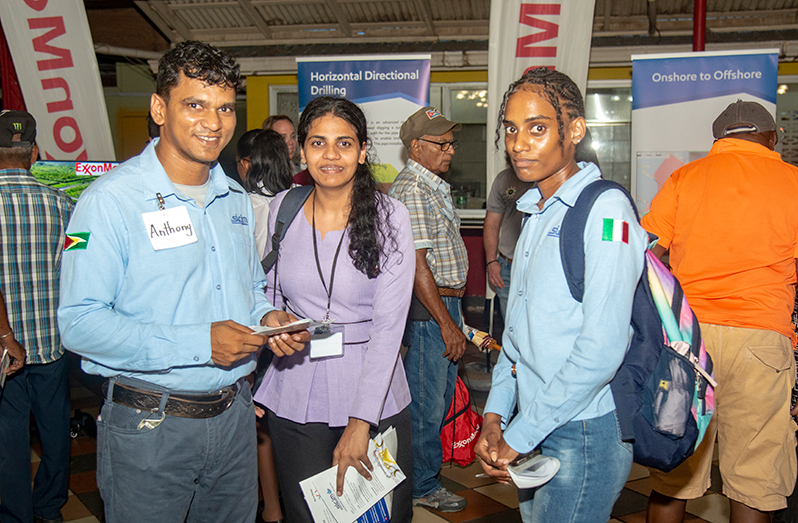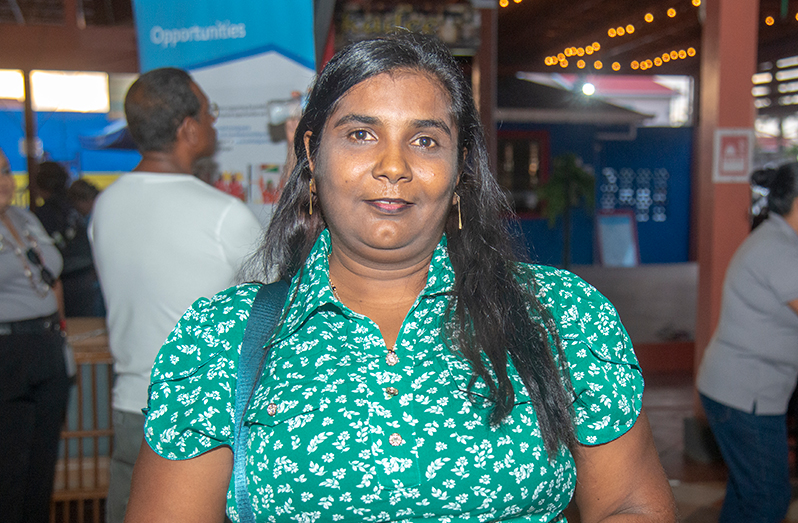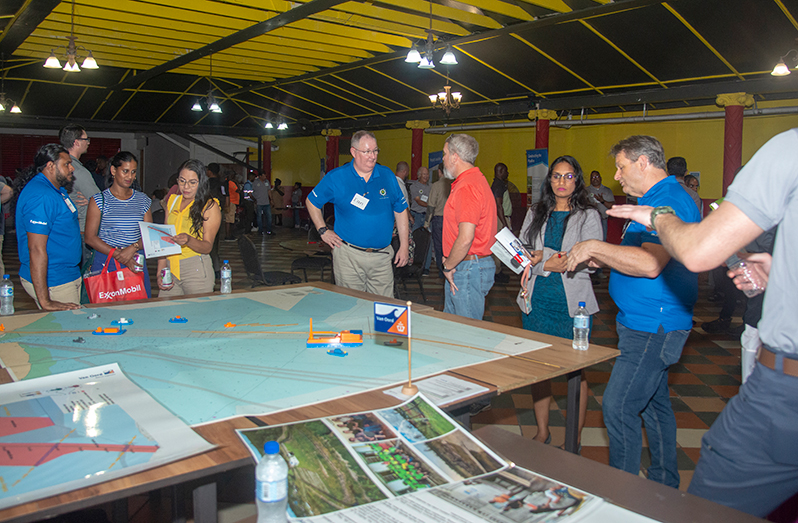By Feona Morrison
IN a bid to engage with the local community and provide transparency about their latest venture, ExxonMobil (Guyana) held its second open house event on the Gas-to-Energy Project on Tuesday last.
The event took place at the Aracari Resort, Versailles, West Bank Demerara (WBD), and attracted a diverse crowd eager to learn more about the proposed project’s impact and benefits.
In order to address their questions and concerns, attendees got the chance to speak with ExxonMobil personnel and project specialists.

The project’s technical features, including its possible environmental advantages and safety precautions, were highlighted in displays and presentations.
Friedrich Krispin, ExxonMobil’s project manager for the Gas-to-Energy Project, in an interview with this publication, said the company receives useful feedback from such events, which helps it to improve its plans and make sure it is advancing its energy initiatives while also meeting the needs of the community.
“Our intent here is a very important one. It is to actually to communicate to the communities where this pipeline is going to be built, how we’re building the pipeline, what safety measures we’re taking about how to construct the pipeline. But very, very importantly, how to live around an operating pipeline. What are the do’s and don’ts, the conditions, the requirements, and how they need to learn to respect the area where the pipeline is actually installed,” he said.

This is the project’s second open house, he added, stating that the prior one received a lot of great comments. According to Krispin, residents responded quite favourably because, for the first time, they were beginning to comprehend “what we’re doing and the benefits that they were going to get by actually having this pipeline feed the fuel into a power plant and a Natural Gas Liquids (NGL) plant.”
There was a combination of curiosity and hope among the neighbourhood members over the gas-to-energy project. The project is a good concept, according to Paramdai Singh of Tuschen, East Bank Essequibo (EBE), because it will provide electricity at a lower cost. She said that people can help themselves with other aspects of life with the money they save on their electricity costs.
According to Deveana Deo, the project will establish Guyana as a sustainable energy producer on the international stage, promoting economic growth and lowering the cost of electricity.
Alicia Hernandez, on the other hand, described the project as a brilliant idea.
“It will lower our electricity bills monthly. A lot of Guyanese will be happy about this; I’m excited. It’s a wonder initiative. Guyana is long overdue for something like this.”
When asked whether the corporation is troubled by unfavourable opinions regarding the project, the Project Manager said, “In any country, you’re always going to have opposed views. That’s the beautiful thing about democracy. We do our best job possible trying to let people understand the benefits of the pipeline. I’m not going to try to change everybody’s minds. That’s not our remit. We put the facts on the table, we let people make up their own mind…”
ExxonMobil has reaffirmed that it will follow all applicable regulations for the duration of the project. The company has also underscored its commitment to reducing any possible disturbances to the community while optimising the project’s beneficial effects.

ExxonMobil urged guests to keep offering feedback and remain updated on the project’s status via various contact channels as the open house came to an end.
Together with CNOOC and Hess, its co-venture partners on the Stabroek Block, ExxonMobil is working with the Government of Guyana to advance the Gas-to-Energy Project.
The Gas-to-Energy Project will see a 200km 12-inch diameter pipeline channeling natural gas from the Liza Phase One and Liza Phase Two Floating, Production, Storage, and Offloading (FPSO) vessels to a power plant NGL facility that will be built in Wales, WBD.
That pipeline will be landing on the West Coast Demerara (WCD) shore and continue approximately 25 kilometres to the NGL and power plant facilities. It has an estimated total cost of US$1.8 billion and is cost recoverable. The power plant and NGL facilities will be funded by the government.
In December 2022, the government and US-based integrated energy solutions group – LINDSAYCA – in partnership with a local firm – CH4 Group – signed a US$759 million contract for the construction of the facilities. The conversion of natural gas from ExxonMobil’s offshore operations to electricity is a key component of the government’s objective to lower energy costs by at least 50 per cent through an energy mix which incorporates gas, solar, wind, and ‘hydro’ power.

The Gas-to-Energy Project is expected to be up and running by the end of October 2024 and has a 25-year lifespan.
As major groundwork continues for the project, the government is still awaiting approval of a key US$646M (about GY$135B) loan for the project, which it sought last year April from the United States EXIM Bank to help meet the cost of its side of the project. The government is optimistic that the loan will be approved by the second quarter of this year.
About $80 billion has been set aside in the 2024 budget to advance this project and the infrastructure that goes along with it, such as changes to the transmission and distribution systems to allow for the offtake of power.



.jpg)








